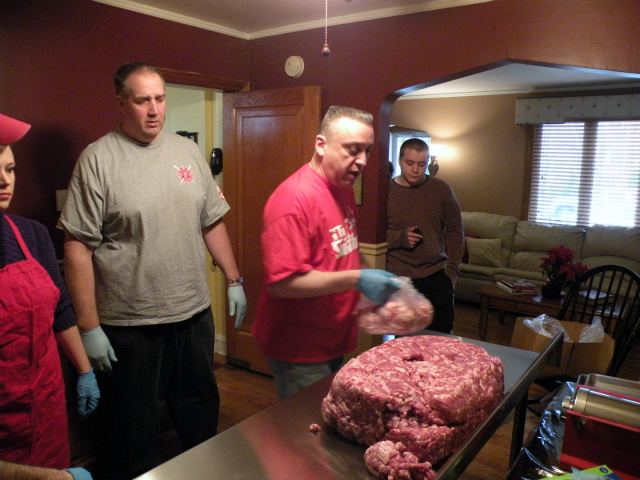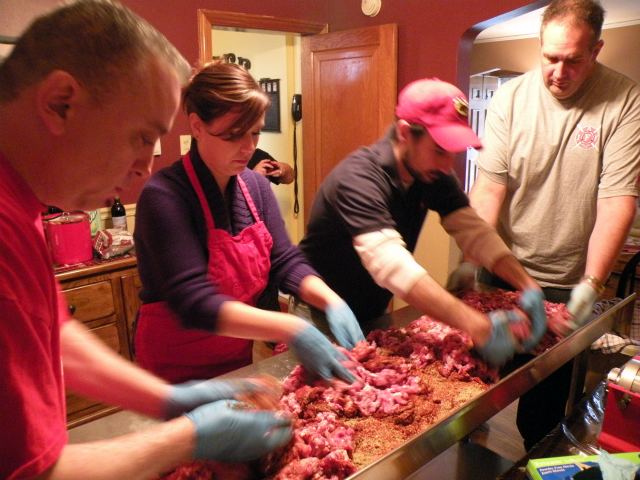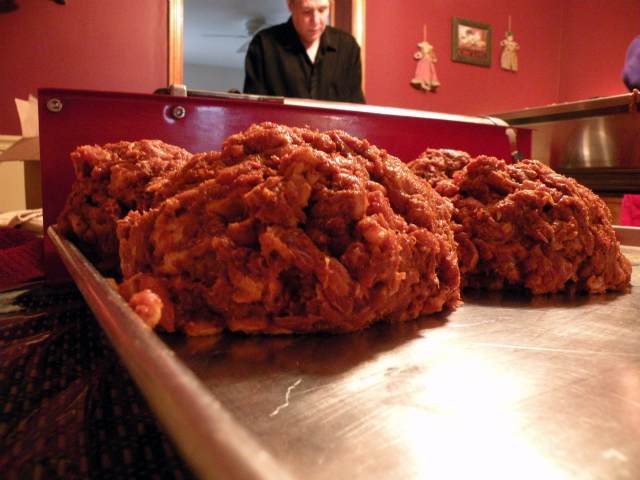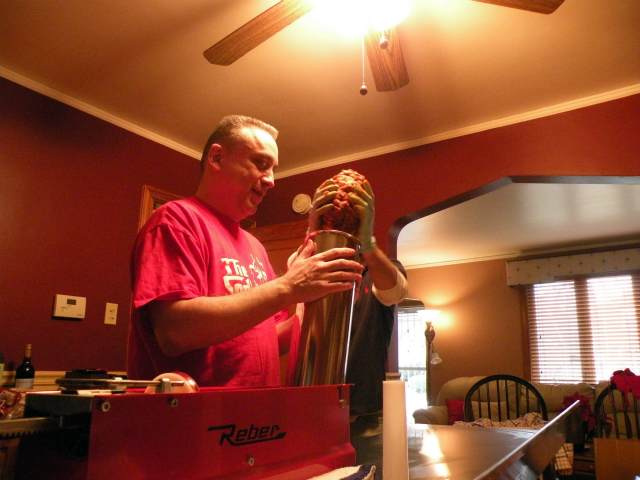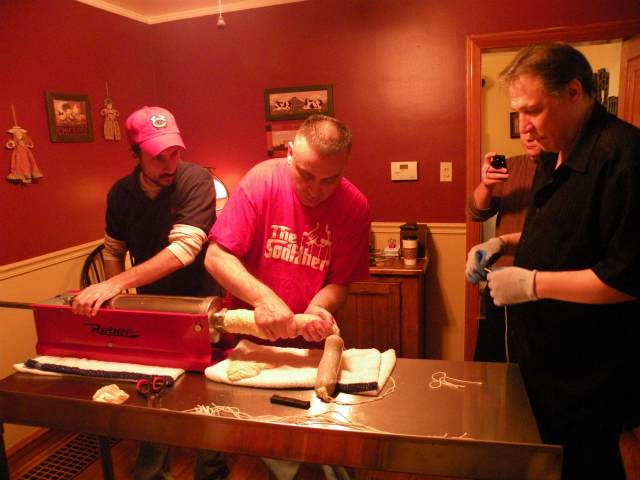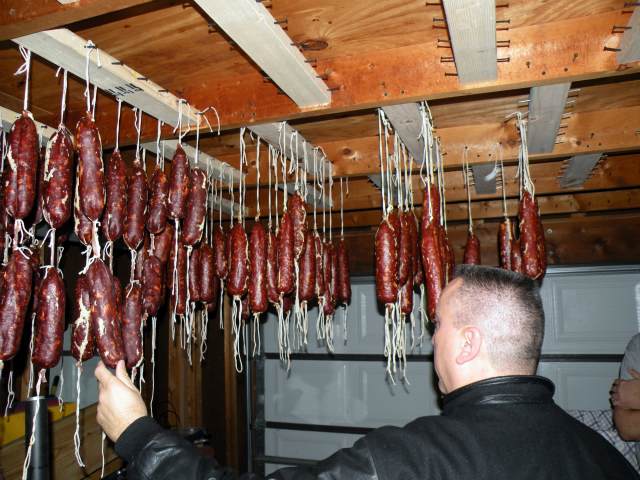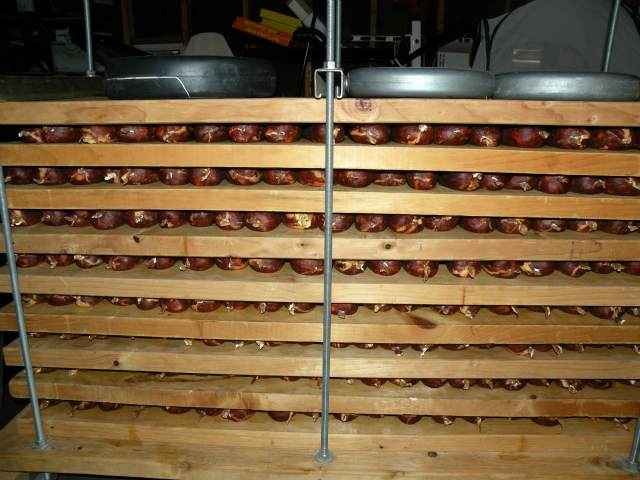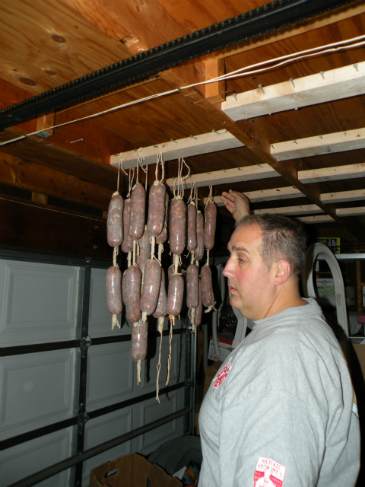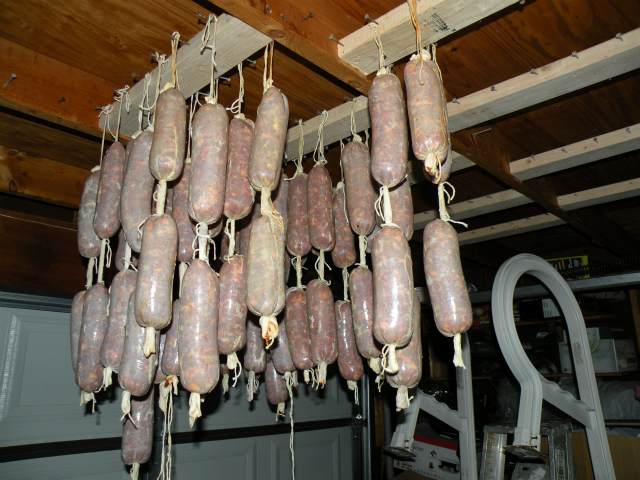Video: Making 60 Pounds of Sopressata with the Sodfather
By Chuck Sudo in Food on Dec 5, 2011 8:45PM
I was one of the judges for Frank Balestri's sopressata contest in September and had such a good time I asked Balestri to keep me in the loop the next time he makes some "supersod." In five short years, Balestri's contest has grown from a small endeavor to one that drew nearly 800 guests and over 50 entries from across the country. Balestri is also at the vanguard of a growing community of men and women making their own sopressatas at home, keeping family recipes alive while passing them down to younger generations.
Chicagoist readers know I have a checkered history with charcuterie. The opportunity to learn to make sopressata from a master in Balestri was something I didn't want passing.
I made my way to Balestri's home on the Southwest side Saturday morning. Joining us was my neighbor Phillip Speciale, longtime manager at Jilly's and the founder of the website Great Chicago Italian Recipes; Coco Pazzo executive chef Chris Macchia and pastry chef Stephanie Mazzone; and Berwyn firefighter Mario Manfredi, who also makes his own sod. Manfredi picked up 60 pounds of coarse ground pork butt from International Meat Company on the West side. "This meat was mooing yesterday," Balestri said.
It was also still cold as the group donned gloves and spread it out along a freshly washed and disinfected stainless steel table set up in Balestri's dining room. Working with colder meat, Balestri said, allows for better mixing of the spices and cure.
Cayenne, red pepper and Calabrian paste all added heat, while the paste and paprika added color. The cure prevents spoilage. The group then folded everything into the meat, like kneading dough by hand, picking out larger chunks of fat, until the mix had a bright red color. Voila, we had just made fresh Italian sausage.
From there, Balestri pulled aside a few ounces for his wife Denise to fry to a crisp and taste. This would determine if any extra spices were necessary. The sausage had a solid heat on the palate and a creeper heat on the back of the throat. Denise Balestri said, "It's choking me up a bit."
"That means it's right where we want it," Balestri replied.
The meat was then divided into a dozen smaller balls to be fitted into a hand-cranked stuffer. ("My grandmother used to stuff her sods with a funnel and a thimble," be remembered.) Balestri had prepared beef intestine casings, which were turned inside out and washed in a solution of water and fresh lemons, to stuff with the sausage. As he and Speciale worked to tie off the casings so that they made two "sticks" at a time to hand, while Macchia slowly cranked the stuffer. Balestri and Manfredi poked holes into the casing. "this allows water to evaporate, prevents spoilage and allows for ventilation," Balestri explained.
Balestri has done so many of sopressatas over the years that he can tell by eyesight how long and thick he wants his sods.
This process went on and on, with the occasional break for Balestri to bake a couple of strombolis or uncork bottles of his homemade wine, for the following 2 hours. By 1 p.m. we had fashioned 56 sopressatas for hanging in Balestri's garage.
And what a garage it was. Balestri has set up his garage so that he can maintain a constant 40 degrees during his sod-making season from late November through February. Balestri lets his sopressatas hang for a week. They're then transferred to a press, where they stay for another week and develop a dog bone shape. From the press, Balestri hangs them back up for 7-8 weeks more.
